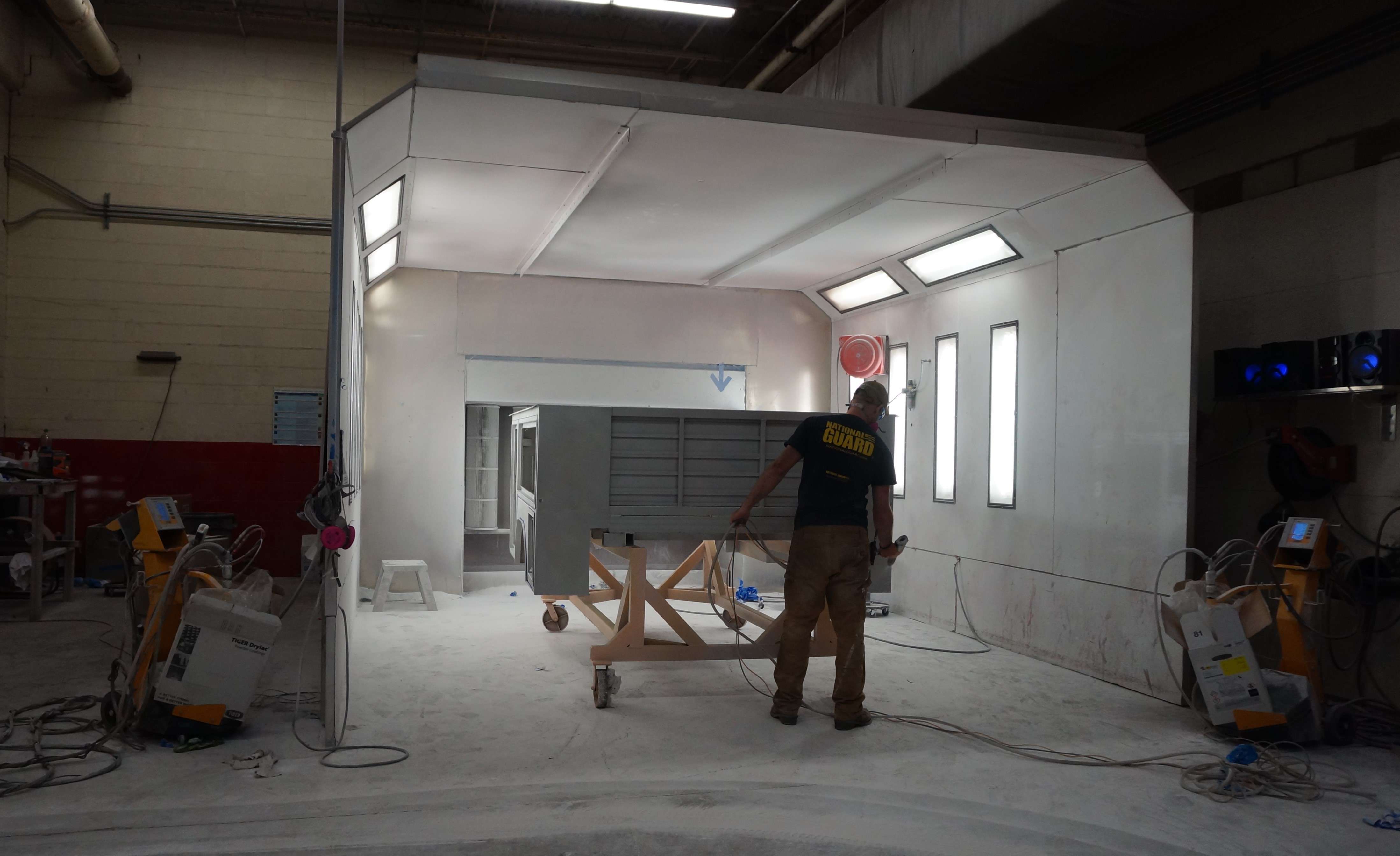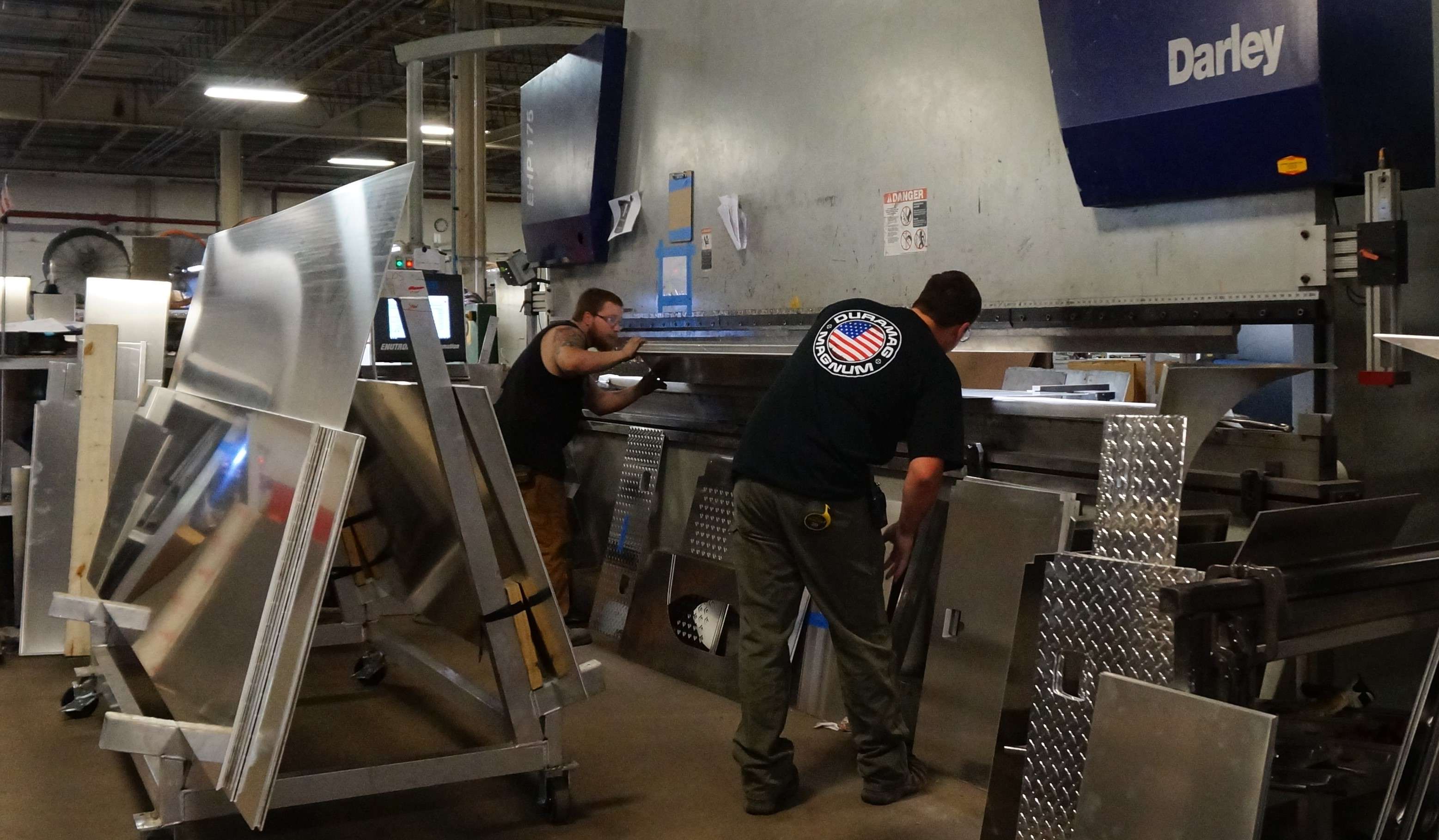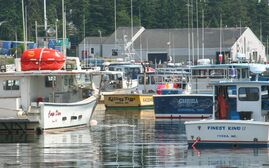
F3 MFG in Waterville growing fast, hoping workforce catches up
At F3 MFG in Waterville, the sound of power tools and other machinery shakes its cavernous quarters.
That's fitting for the aluminum truck body manufacturer, named the state's third-largest growing business two years in a row, and ranked in the top 900 in the U.S. by Inc. magazine in August.
The company has grown 490% in three years, and expects to continue the trend, with plans to double its revenue by next year, increase its space and increase its 230-person workforce by 25%.
The company, which makes truck bodies and accessories under the Duramag and Magnum brands, grew from $200,000 in sales in 2010 to an expected $30 million this year, Sturtevant said in August.
There's just one hitch: "We're always hiring," said co-owner Bill Cleaves.
Co-owner Joyce Galea agreed, "If we could hire more people right now, we would be hiring them."
Charlotte Mace, of the state's Office of Business Development, said that is the number one message she gets from business owners as she travels Maine. "Workforce, workforce, workforce," she said. "It's at the top."
Mace was part of a group touring F3 MFG Wednesday to take a look at one of the state's manufacturing success stories.
The company was founded by Cleaves who, in 1996, frustrated by the lack of high-quality enclosed aluminum trailers in the steel-dominated automotive market, made one for himself. He eventually began making truck racks and bodies. Galea and co-owner Tom Sturtevant came on board in 2016.
It occupies 150,000 square feet in the former Wyandotte mill building on Trafton Road and Route 104, owned by Trafton Properties. Its growth has prompted Trafton Realty LLC's Harry Kojoian to plan another 120,000-square-foot building to spread the tenants of the current 200,000-square-foot building out.

Increasing workforce participation
Galea said one of the issues in hiring is finding workforce housing, particularly with transportation challenges in the central Maine.
She'd like to see a developer build nearby — Trafton Properties has 920 acres of mostly rolling farmland and woods ready for development on Trafton Road — and F3 could lease units, subleasing to workers. "It's difficult for employees to come up with a security deposit, first and last month rent, money for furniture," she said.
"If someone built 50 units and asked, 'How many can you rent?' I'd say, '200 of them.'"
Galea said the landlord would be guaranteed the rent would be paid on time and the units would be occupied. Employees would have a place to live and be able to get to work. "It'd be a win-win for everyone," she said.
Mace said later that it's a model already being tried out in the tourism sector for seasonal workers who can't afford the high rents, or find living space, in the towns where they work. "Workforce housing is definitely another issue we hear a lot about," she said.
She said F3 is an example of a company that's open to giving second chances to people who are down on their luck, or new Americans.
"They're increasing participation in the workforce," she said.
Because many they hire don't have a lot of resources, that makes it even tougher to find housing, Galea and Cleaves said.
"A lot of these guys just need a leg up," said Cleaves.
F3 trains workers for the variety of production jobs it offers, and offers advancement to those who want it.
One employee was hired right out of high school and began sweeping floors. In less than three years he is an outfitter, one of the top jobs on the production floor, requiring skills ranging from mechanical to welding.
"Every job here is important," Galea said. "And we're sure to treat them that way."

Room to grow
The aluminum truck body industry is growing because the trucks are lighter, so can hold a bigger payload than steel trucks, Cleaves said. They can also go places heavier trucks can't.
The March 20198 10% tariff on aluminum imports didn't affect the company, because there was also a 25% tariff on steel, Galea said. U.S. production of aluminum has also increased.
"We raised prices a little, and then it was business as usual," Galea said. "There was about 15 minutes of squawking."
"Less than 15," Cleaves said.
The company's projected growth last year and this year, speaks to that, they said.
Garvan Donegan, director of planning and economic development for the Central Maine Growth Council, who was also on Wednesday's tour, said they company is an example of what can happen in the Trafton road area, poised for development.
The city, state and businesses partnered on opening a new Interstate 95 exit, Exit 130, on Trafton Road four years ago, and Summit Natural Gas has also run a pipeline through the area.
Kojoian, of Trafton Realy LLC, said that the the pipeline is a great asset for potential manufacturing in the area.
Donegan, too, said the undeveloped land could become a logistics and manufacturing hub.
"This was all empty four years ago," he said, indicating the sprawling production area of the building. "Now look at what's happening here."














0 Comments